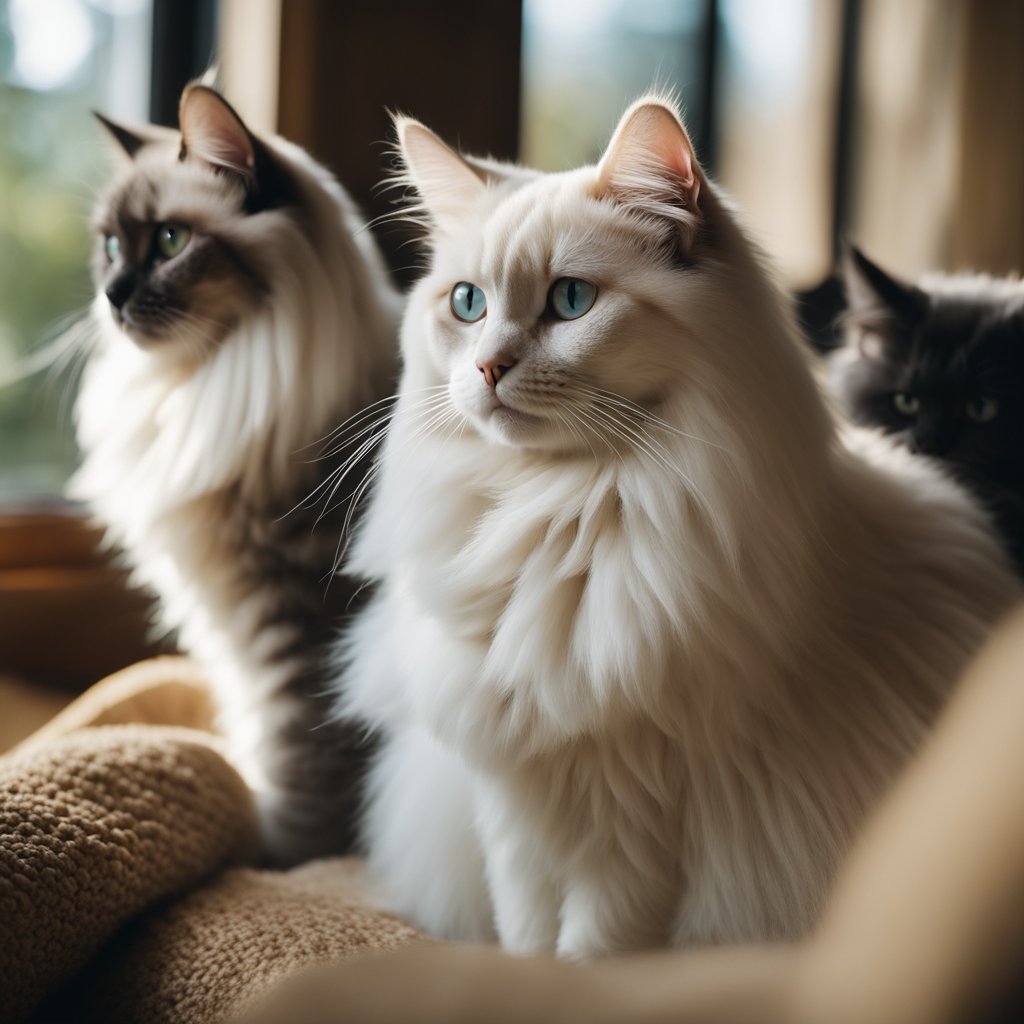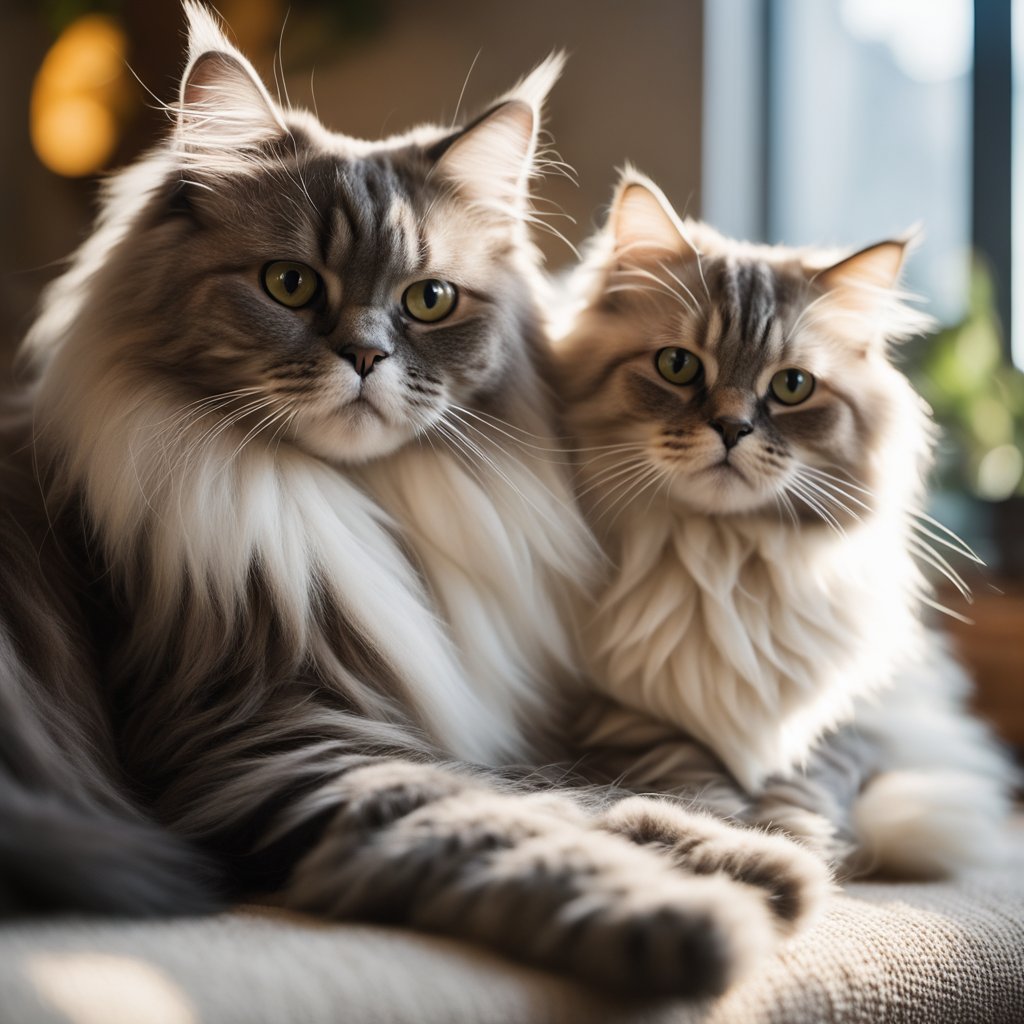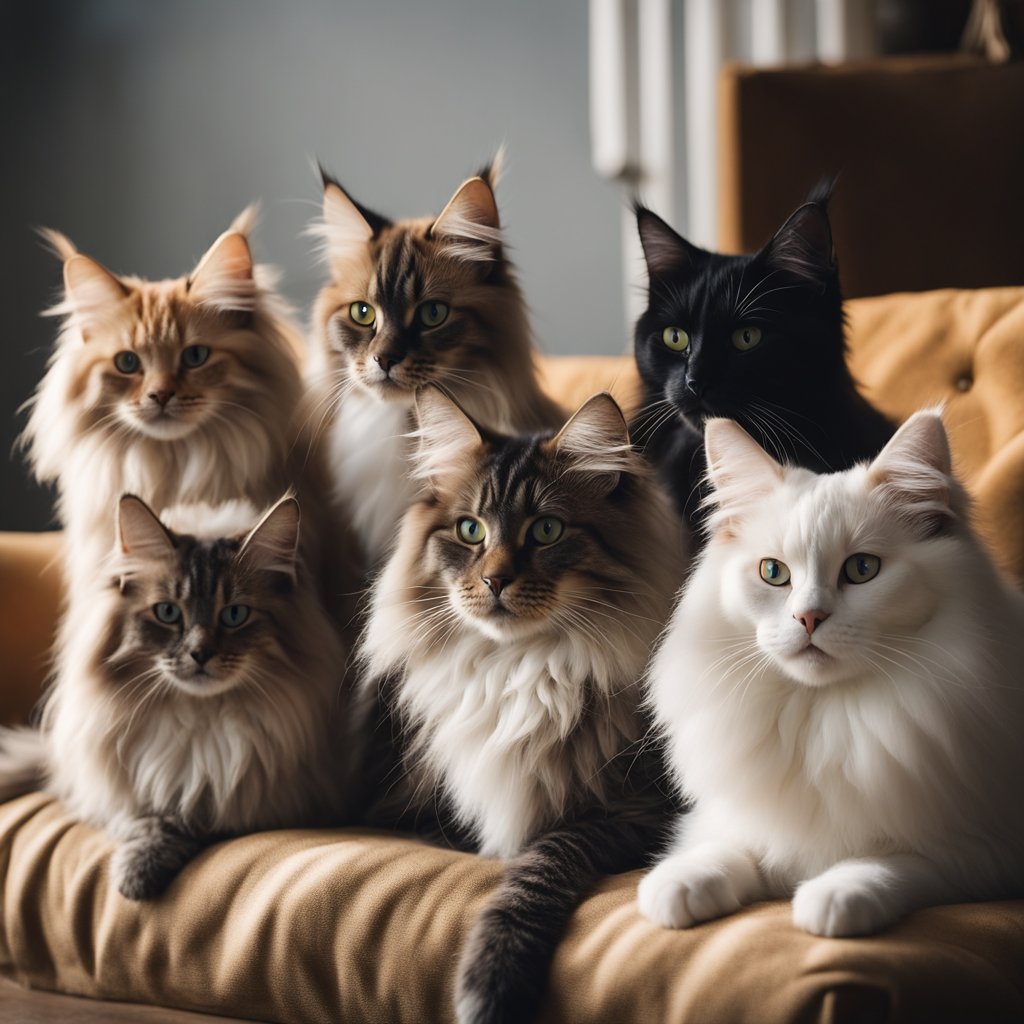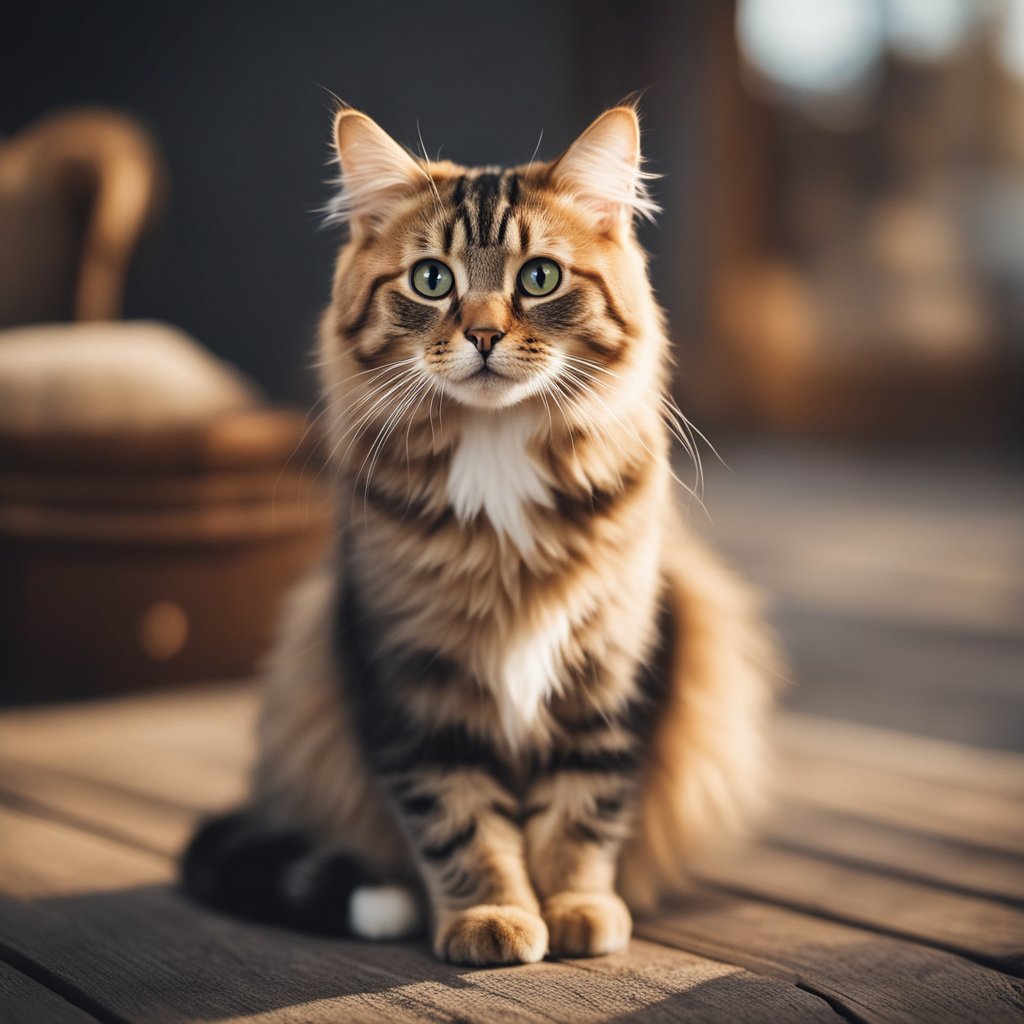
Most Cuddly Cat Breeds: A Guide to Affectionate Cats
Cats are often celebrated for their independent and sometimes seemingly aloof nature, but many cat breeds are known for their affectionate and cuddly demeanor. These breeds exhibit characteristics that make them ideal companions for those looking for a loving pet. They are often people-oriented, seeking out human interaction and the warmth of a comforting lap. From the iconic and plush Persian with its long, luxurious fur to the friendly and outgoing Ragdoll, known for going limp with happiness when picked up, these cuddly cat breeds have a special way of forming strong bonds with their caretakers.
While a cat’s individual personality plays a crucial role in how affectionate it may be, certain breeds are predisposed to be more cuddly. These cats are not just friendly; they thrive on companionship and are happiest when they are close to their humans. Their loving nature often brings a sense of calm and happiness to homes, making them a welcomed addition for individuals and families alike. Some lesser-known breeds also share these cuddly qualities, offering an array of options for potential cat owners. Moreover, understanding how to care for and build a bond with these affectionate felines is paramount in nurturing a lifelong, loving relationship.
Key Takeaways
- Affectionate cat breeds are ideal for those seeking a companionable pet.
- Characteristics such as being people-oriented and loving make certain breeds stand out as cuddly.
- Building a strong bond with a cuddly cat involves care and understanding of their affectionate nature.
The Allure of Affectionate Cat Breeds
When it comes to choosing a feline companion, many potential cat owners are drawn to the breeds known for their affectionate natures. Affectionate cat breeds offer a special charm with their desire for human interaction and loving demeanor.
Ragdoll Cats: Known for going limp when held, the Ragdoll cat epitomizes the affectionate pet. They are people-oriented, often following their owners from room to room, seeking physical closeness and displaying a gentle and laid-back personality.
Birman Cats: The Birman breed possesses striking blue eyes and a luscious coat, but it’s their affectionate personality that truly captivates. Birmans are known for being loving towards their family members, happily engaging in cuddling sessions.
Burmese Cats: Originating from Southeast Asia, the Burmese cat is another breed celebrated for its affectionate traits. They are often described as “people-oriented,” craving attention and interaction. Their social nature means they thrive in environments where they can be part of daily activities.
The appeal of these breeds is not solely in their plush coats or aesthetic allure; it is in their ability to form deep bonds with their owners. They are excellent companions, demonstrating that the connection between cats and humans can be as enriching and affectionate as any pet relationship.
In summary, affectionate cat breeds such as the Ragdoll, Birman, and Burmese offer a heartwarming blend of physical beauty and emotional warmth, making them ideal pets for those looking to share a close bond with their feline friend.
Characteristics of Cuddly Cats
Cuddly cats often exhibit a range of distinctive traits that make them particularly endearing to their human companions. From their luxuriant fur to their sociable nature, these felines are bred for companionship and affection.
Physical Traits
Cuddly cat breeds typically possess a soft, plush coat that invites petting. Breeds with semi-long to long hair, such as the Maine Coon and Persian, often have this luxurious fur. These cats may also display a more rounded, gentle appearance, with large, expressive eyes that contribute to their adorable demeanor.
| Breed | Coat Type |
|---|---|
| Maine Coon | Long, shaggy |
| Persian | Long, silky |
| Ragdoll | Semi-long, soft |
| Long-haired Siamese | Silky, fine |
Personality and Temperament
When it comes to personality, a cuddly cat is typically calm, gentle, and sweet-natured. Breeds like the Ragdoll are known for their affectionate and easy-going temperament. They are also intelligent and curious, which makes them engaging companions. Conversely, some breeds may have an independent streak that belies their cuddly exterior.
- Playful and Active: Siamese, Tonkinese
- Calm and Gentle: Persian, Ragdoll
Unique Vocalizations
Certain breeds, such as the Siamese or Tonkinese, are quite vocal with distinct calls that can almost feel like an attempt at conversation. These vocalizations are a part of their affectionate behavior, as they actively seek interaction with their owners.
- Siamese: Known for loud, low-pitched vocalizations.
- Tonkinese: Blend of Siamese and Burmese vocal traits.
Grooming and Care
A cuddly cat’s grooming needs often align with its coat length. Long-haired breeds like Persians require regular brushing to prevent tangles and maintain their coat’s health, while shorter-haired cuddly cats might need less frequent grooming. Irrespective of breed, regular grooming sessions can enhance the bond between cat and owner, reinforcing affectionate behaviors.
- Long-haired breeds: Daily brushing recommended.
- Short-haired breeds: Weekly brushing may suffice.

Popular Cuddly Cat Breeds
When considering a feline companion renowned for their affectionate nature, several breeds stand out. These popular breeds are not only known for their physical beauty but also for their desire to socialize and bond with their human families.
Ragdoll
The Ragdoll is notable for its large size and striking blue eyes. Characterized as gentle and laid-back, Ragdolls often display dog-like behaviors such as following their owners around. Their affectionate and placid temperament makes them ideal for families and indoor living.
Maine Coon
Maine Coons are one of the largest domesticated cat breeds, recognized for their friendliness and playful nature. These cats are social butterflies with a penchant for interaction, making them excellent companions for children and adults alike.
British Shorthair
The British Shorthair is beloved for its dense, plush coat and easy-going attitude. Known to be affectionate yet independent, British Shorthairs can provide the perfect balance of companionship without being overly needy.
Scottish Fold
Distinctive for their unique folded ears, Scottish Folds are cherished for their affectionate disposition. They tend to form strong bonds with their owners and are known to be very comforting and agreeable cats to have around the home.
Persian
Persians are characterized by their luxurious coats and expressive eyes, alongside a playful yet dignified personality. They typically enjoy a calm environment where they can lounge and interact affectionately with their families.
Birman
With their striking appearance and gentle demeanor, Birmans are both beautiful and affectionate. They enjoy being close to their human companions and have a friendly nature that makes them suitable for a variety of households.
This selection of breeds offers a glimpse into the world of cuddly cats that are likely to provide warmth and companionship to their human counterparts.

Considerations for Cat Parents of Cuddly Cats
Selecting a cat breed that aligns with an owner’s desire for a cuddly companion involves understanding not only breed traits but also the environment that enhances feline affection. Making an informed choice and providing a nurturing space can pave the way for a rewarding relationship between a cat and its family.
Creating a Cuddly Environment
A Place of Comfort: For a cat to exhibit its cuddly nature, first and foremost, it requires a safe and comfortable living space. This can be achieved by:
- Soft bedding: A designated spot with plush cushions or a cat bed where the cat can rest and feel secure.
- Warm nooks: Cats enjoy warmth, so consider spaces near sunlight or with gentle heating.
Human Interaction: Cats of affectionate breeds, such as the Egyptian Mau or Scottish Fold, thrive on interaction. They respond well to:
- Gentle petting: Initiate contact when the cat appears relaxed and receptive.
- Consistent playtime: Interactive toys can help in developing a playful and affectionate relationship.
Family Dynamics: When adopting a family pet, consider the dynamic of the household:
- Introductions: Introduce the cat to all family members gently to build trust.
- Observation: Watch for the cat’s reaction to different people; some breeds are more people-oriented than others.
Personality Traits: Cat breeds can range from independent and aloof, like some Russian Blues, to outgoing and friendly, such as Maine Coons. Owners should:
- Research: Learn about breed-specific traits and how they match with their lifestyle.
- Recognize individuality: Even within a breed, each cat possesses a unique personality.
Health and Well-being: Neutering or spaying your pet is crucial as it can affect their temperament. It can lead to a more gentle and easy-going cat. Other aspects to consider:
- Regular check-ups: Ensuring your pet is healthy, as discomfort can lead to behavioral changes.
- Diet: Proper nutrition contributes to overall well-being, affecting a cat’s mood and behavior.
By being attentive to their feline friends’ needs and understanding the intricacies of different cat breeds, owners can create a nurturing environment that is conducive to developing a lasting and affectionate bond.
Lesser-Known Cuddly Cat Breeds
When it comes to cuddly cat breeds, several lesser-known varieties exhibit affectionate behaviors that might surprise potential cat owners.
The Norwegian Forest cat boasts a lush coat and a sturdy build, hailing from the cold climes of Norway. Despite their wild appearance, they are known for being gentle, friendly, and fond of human companionship, often seeking out a warm lap for a cozy snuggle.
Sphynx cats, recognizable by their hairless bodies, revel in warmth and are therefore highly inclined to cuddle with their owners. Their lack of fur makes them seek out sources of heat, and often that source is a human who provides both warmth and affection.
Abyssinians, while not as overtly cuddly, possess a playful and curious nature. They tend to form strong bonds with their owners and often demonstrate their affection through their constant presence and interaction rather than typical lap-sitting.
Another breed that treasures closeness is the Selkirk Rex. With their unique curly coat, they are not only visually striking but also have a patient and loving demeanor. These cats typically enjoy being held and petted.
The Somali cat, a long-haired cousin of the Abyssinian, also displays a social and loving temperament. Somalis are known for being interactive with their human counterparts, showing their affection through active engagement and playfulness.
Quick Comparison:
| Breed | Coat Type | Known for |
|---|---|---|
| Norwegian Forest | Long and lush | Gentle companionship |
| Sphynx | Hairless | Seeking warmth |
| Abyssinian | Short and fine | Playful bonding |
| Selkirk Rex | Curly | Enjoying contact |
| Somali | Long and soft | Interactive affection |
Each breed has its own distinct ways of expressing love and companionship, making them delightful choices for those seeking a feline friend with a penchant for cuddling.

Caring for Your Cuddly CAT
When selecting a cuddly cat breed, owners quickly discover that the joys of owning such a loving and devoted companion are truly rewarding. However, grooming and general care are crucial to maintain the well-being of these affectionate family pets.
Grooming Needs:
Cats typically keep themselves clean; however, regular brushing can help reduce shedding and prevent hairballs, especially in long-haired breeds. It’s important to start a grooming routine early, so cats become accustomed to it.
- Short-haired cats: Brush once a week.
- Long-haired cats: Brush a few times a week.
Feline Affection:
Cuddly cats thrive on attention and regular interaction with their human family. Set aside time each day for petting and play to satisfy their need for love and to strengthen the bond.
Creating a Loving Environment:
- Provide comfortable resting areas.
- Keep the environment stress-free.
- Introduce new pets or family members gradually.
Health Care:
Preventive care is essential. Keep up with vaccinations, flea and tick prevention, and regular vet checkups. Monitor for changes in behavior, as they can indicate health issues.
Nutrition and Exercise:
A balanced diet and regular playtime promote a happy and healthy life for feline friends. Use interactive toys to engage their natural predatory instincts.
In summary, caring for these devoted creatures involves meeting their physical needs through grooming, providing emotional support through regular affectionate interactions, and creating a nurturing environment for them to thrive as integral family pets.
Building a Bond With Your Cat
Building a strong bond with a cat can be a rewarding experience. Cats vary in personality, with some being aloof and others more sweet and gentle. However, with the right approach, even the most reserved feline can form a devoted relationship with their human companions.
Interactions: Consistency is key. Regular, gentle interactions can help build trust. Cats that are people-oriented often respond well to playtime, while intelligent cats may enjoy interactive toys that challenge their minds.
Respect Boundaries: Recognizing a cat’s individual space and comfort limits is critical. Not all cats appreciate being picked up or cuddled, but many will seek affection on their terms.
- Sweet: Offer treats and speak in a soft tone.
- Gentle: Use slow movements to not startle the cat.
Routine: Establishing a routine helps cats feel secure. An easy-going cat may adapt swiftly, while others may need more time. Feeding, play, and sleep should follow a consistent pattern.
Affection: Signs of affection, such as petting, should be given when the cat seems receptive. A cat may indicate readiness for affection by nudging, purring, or curling up close.
Environment: A stress-free environment contributes to a cat’s well-being. Ensure the cat has access to:
- Safe hiding spots
- High perches
- Comfortable sleeping areas
Incorporate these strategies with patience, and over time, a bond of mutual respect and affection will often develop between a cat and their caregiver.

Frequently Asked Questions
Choosing a cuddly cat breed can greatly enhance the bond between pet and owner. This section answers common questions regarding the affectionate nature of certain cat breeds.
What are the top breeds known for their cuddly nature?
The Ragdoll, Scottish Fold, and Burmese breeds are famously cuddly, often seeking out human affection and enjoying close contact with their owners.
Which cat breeds are recognized for being particularly fluffy and affectionate?
Breeds like the Persian and Maine Coon are not only known for their fluffy coats but also for their affectionate and gentle demeanors, making them great companions.
How can one identify an Affectionate cat breed that is inclined to be a lap cat?
Cat breeds that are inclined to be lap cats often exhibit relaxed, easy-going temperaments and a tendency to follow their owners around, like the Russian Blue and Birman.
In terms of friendliness and affection, which cat breeds stand out?
The Siamese and Sphynx are among the breeds that stand out for friendliness, often vocalizing their desire for interaction and enjoying being at the center of family activities.
What characteristics make a cat breed more likely to seek out human companionship?
Breeds that are sociable and adaptable, such as the Exotic Shorthair and the Ragamuffin, tend to seek out human companionship more due to their affectionate nature and love for social engagement.
Can the color or patterning of a cat, such as tabbiness, indicate its level of affection?
There is no scientific evidence linking a cat’s color or pattern, such as tabbiness, to its level of affection. Personality traits and affection are more breed-specific and individual rather than color-based.